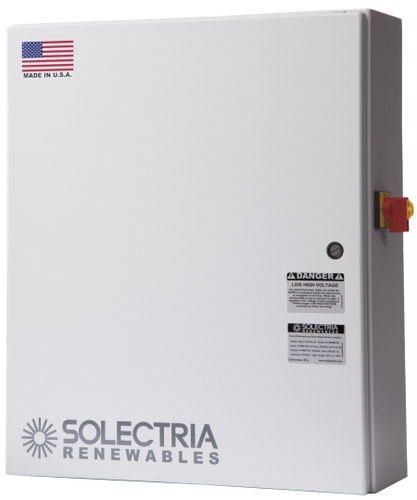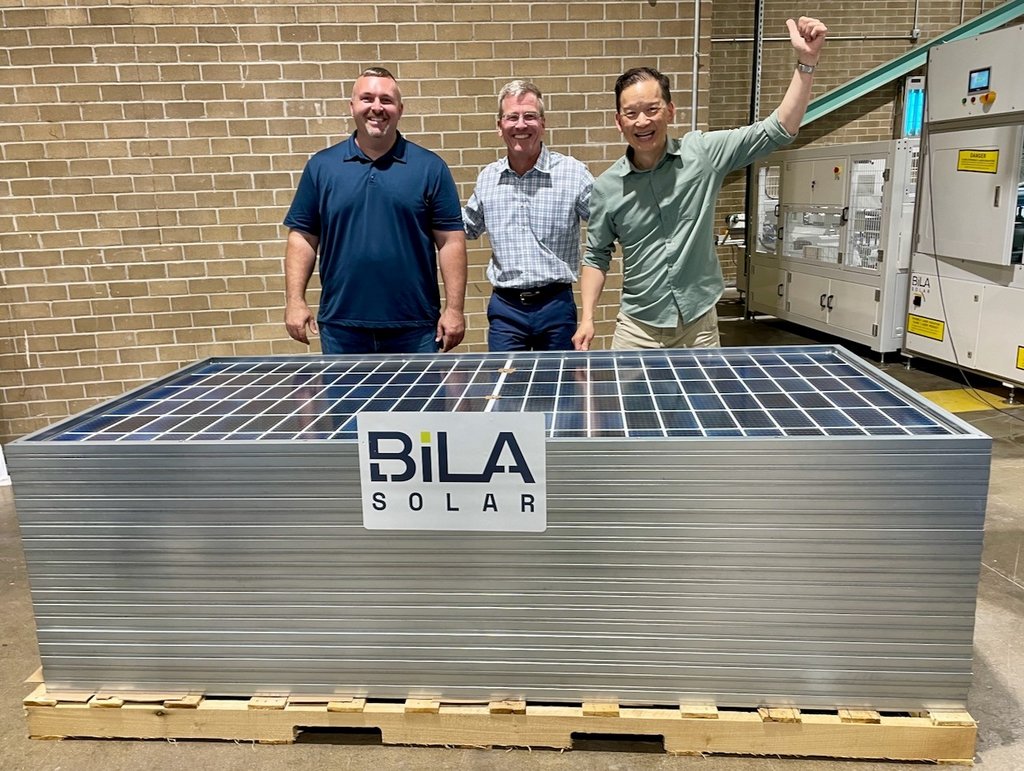How to select the right combiner box for your next solar project
Does is it protect the system?
First and foremost, be sure whatever you choose meets the code requirements for your particular jurisdiction. The 2011 code made everyone place a disconnecting combiner within 6 ft of the array for a roof mount. The 690.12 codes require rapid system shutdown.
 An arc fault is a high power discharge of electricity between conductors that creates an abundance of heat. This breaks down wire insulation and will possibly lead to an electrical fire.
An arc fault is a high power discharge of electricity between conductors that creates an abundance of heat. This breaks down wire insulation and will possibly lead to an electrical fire.
It is important to pair the arc fault solution to the inverter. For central inverters, detecting an arc fault at the inverter is very difficult, says Eric Every, senior applications engineer at Solectria – a Yaskawa company.
“If the inverter has 100 to 200 strings, a fault on one string does not generate enough signals indicative of an arc compared to the natural electrical noises in the system,” Every says. “Above 50 kW, detecting an arc becomes even more difficult. Instead of installing arc fault circuitry at the inverter, implementing arc fault detection at the combiner level provides more accurate detection.”
Solectria’s arc fault-enabled combiner box, the ARCCOM, for example, includes string-level arc fault detection where each string input is monitored for arc faults. If an arc is detected, a DC contactor in the combiner box opens, isolating that section of the array. The inverter is able to continue producing energy with the remaining combiners.
This saves customers a ton of time when looking for arc fault damage.
“When the combiner detects an arc, the combiner turns off and requires a person to perform a manual reset to resume production from that combiner,” Every says. “When the technician goes to investigate the issue, there are LEDs that indicate which sensor tripped. Instead of looking for arc damage on all 24 strings that feed the combiner, the sensor will indicate the group of four strings that triggered the combiner box to trip off.”
That would mean 83 percent of the strings would no longer need to be inspected.
Arc fault detection works because DC arcs generate a lot of electrical noise. The arc fault sensors look for noise signatures that indicate there is an arc fault in the system. One of the challenges with implementing arc fault detection is that the frequency range for noise indicative of arcs is similar to the natural switching noises from inverters.
OutBack previewed its FLEXware ICS Plus line last fall that includes arc-fault circuit interruption (AFCI), rapid shutdown and DC disconnecting means. With other grid-tied systems, AFCI may be provided by the inverter, but for battery-based systems the inverter is isolated from the PV array. Hixson says placing the AFCI in the combiner box, as close to the main source of arcing events as possible, not only helps visibility, but also reduces the likelihood of “nuisance tripping.”
RELATED: Rapid System Shutdown: Questions and Solutions
“Nuisance tripping is one of the biggest concerns with AFCI solutions, as all arc fault events have to be manually reset per the 2014 NEC,” Hixson said. “This can be a big problem when it means a truck roll each time an AFCI event occurs, whether it is an actual arcing event or just a nuisance trip. AFCI nuisance tripping can cost an installer both time and money.”
OutBack also recommends ground-level reset and default safe contactors when possible to keep the technician from needing to head up to the roof.
Also, be sure that all of the components you’re installing to ensure rapid system shutdown are compatible — specifically the inverter, conductor and the combiner box.
“There is a requirement to bleed down residual voltage, even though a third-party rapid shutdown system might be used,” says Sagar Khare, ABB’s residential inverters product manager for NA. “So even if the inverter is shut down, there can be voltage on the line. We’ve had some customers just install what was available at the time, and an inspector checked it out and it did not always comply.”
Do you even need a combiner?
Some sites, depending on the other materials selected, may be able to connect everything without a combiner. A new solution from Shoals made its debut at Intersolar NA, the Big Lead Assembly (BLA) harness that was essentially just a thicker gauge of wire that is capable of handling current voltage of the strings without using a combiner.
RELATED: Watch this video of Shoals CEO Dean Solon explain their latest innovations
Such a solution for the right project (one that isn’t extremely complex) could significantly decrease install time.
“For our core group of customers, we only save them about 20 percent with the BLA, but with customers who don’t look at wiring solar fields the same way we do, we’re at about 60 percent cost savings with the BLA versus if you were to home run from each string,” Maros says.
But when removing the combiner box from the equation, be sure you have done your homework and aren’t just wiring up a work-around that reduces costs without fully protecting the install.
“We have seen problems on installations without combiner boxes, most often in emerging markets where installers/customers combine the PV source circuits in some other way, typically to bring costs down,” Hixson says.
“This can result in a hazardous condition because, should a fault occur in one of the PV source circuits, not only could the conductor potentially see backfeed current from parallel PV strings, but it could also see backfeed current coming from the battery bank.”




